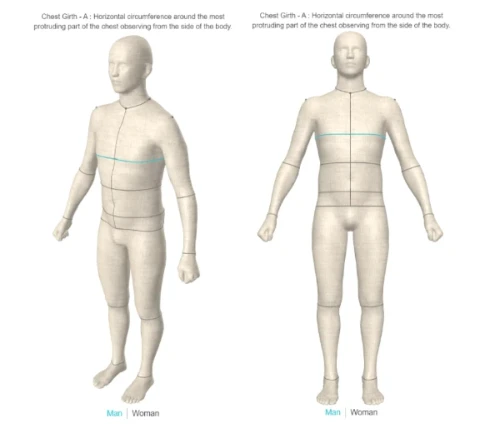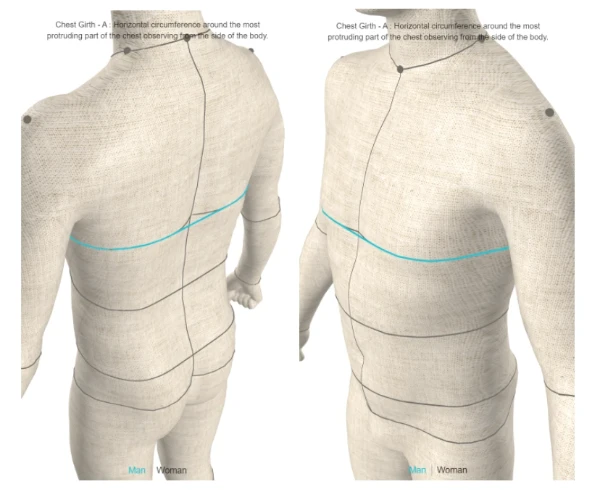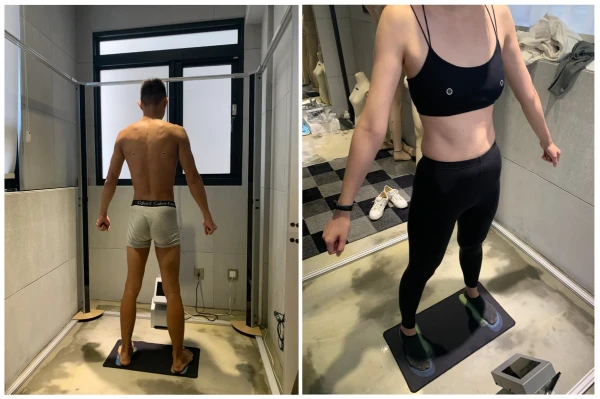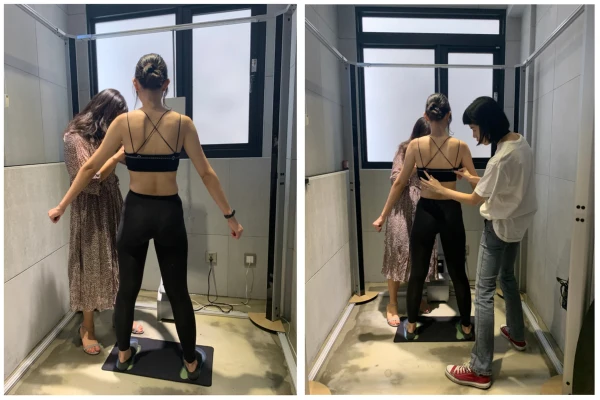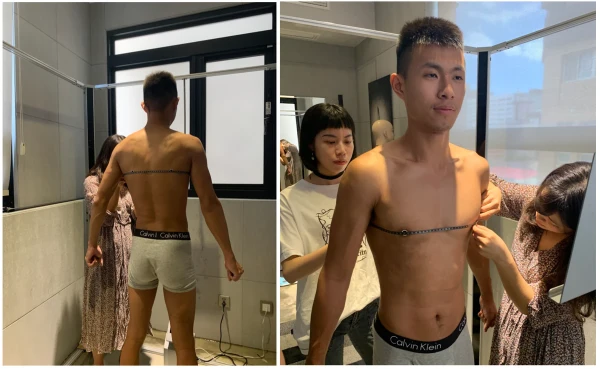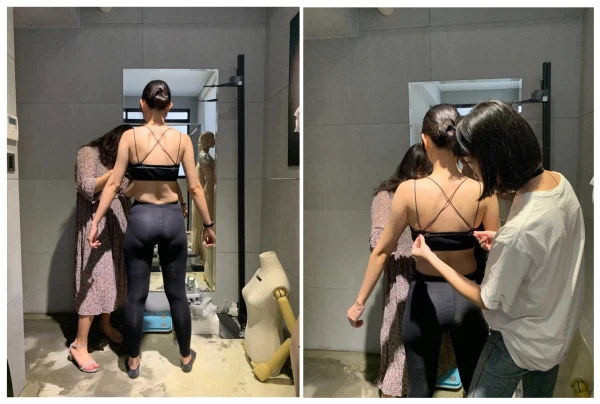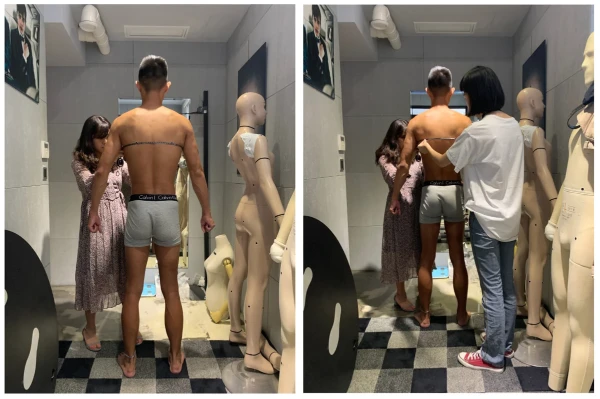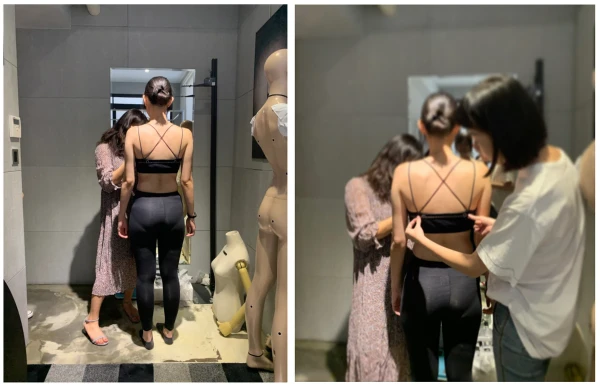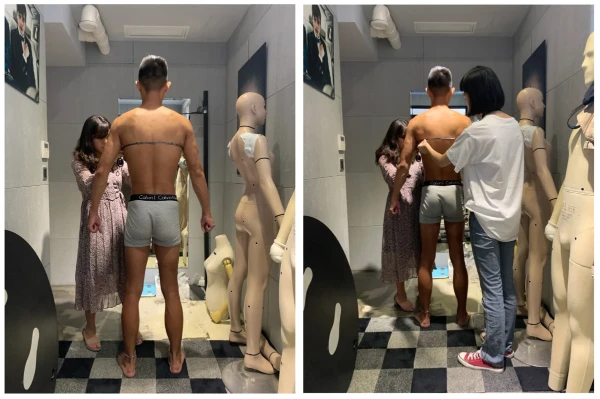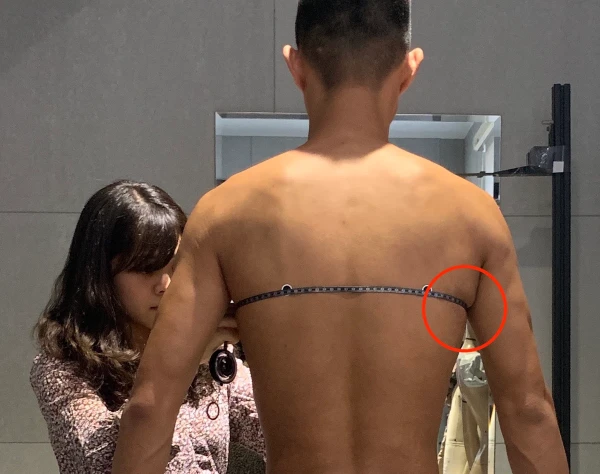Body measurement has always played an important part in the apparel industry for pattern making and size determination.
Until now, manual measurements have been the standard in the fashion industry.
However, this method tends to be limited when it comes to measurement repeatability, accuracy, and consistency across different personnel.
What’s the Limitation for Manual Measurements?
Many errors and differences can result from the measurer’s skills and judgements.
As well as this, different postures in the person being measured, compressed soft tissue from the measuring tape and fatigue in both the person being measured and the measurer resulting from this time-consuming measuring process will affect the outcome.
The effect of COVID-19 also makes manual measurements more difficult due to sanitary issues.
The Popularity of 3D Body Scanning:
In recent years, the popularity of three-dimensional (3D) body scans and 3D measurements has soared.
They are instrumental in several different markets, such as custom made & bespoke apparel, fitness & wellness, footwear, and virtual reality, to mention a few. Increasingly, these sectors are demanding pinpoint, repeatable accuracy in the results given.
3D body scans are not affected by subjective factors, are non-contact, and results are reproducible. They also take seconds to complete, so there is no time for the subject to get tired.
However, there are still a lot of trust issues regarding the result difference between manual measurements and 3D body scanning.
We have a lot of feedback from our clients asking why our results are not the same as their tape measurements results?
How can we use the data from 3D body scanning or 3D measuring of garment sizes?
We understand those issues and concerns and will be explaining the details in the following paragraphs.
However, we believe that 3D body scanning is not intended to replace traditional measurement methods, but to provide a comprehensive set of repeatable measurement tools to reduce the time for customers coming back and forth for measurements.
First, We Need to Understand how A 3D Body Scanner Measures the Body:
Below are two photos of the 3d model body measurements results from Scanatic™ 360 Body Scanner.
Take the bust measurement as an example, the algorithm of the 3D body scanner will automatically find the most protruding elevation for the chest, pull a line around that is horizontal to the floor and simulate the physical effect of a measuring tape - forming a straight line when the body surface curves inwards.
Please see the reference photos below.
The distinguishing part of the 3D body measurement method is that the outline of the measurement is next to the body surface, and it is not easy to do this traditionally with a tape measure.
Since the human body is soft and elastic, it is quite difficult to apply a tape measure to the human body without pressing on the muscles and skin.
Another important part of 3D body measurement is the horizontal outline. In the digital world, it is easy to find the horizontal plane parallel to the ground, but in reality there is no way to accurately position the tape measure perfectly horizontal.
How Does a Tailor Manually Measure the Human Body?

Let's take a look at how the tailors measure the bust. The manual measurement is usually done by one person.
The tailor will stand in front of the customer, wrap the measuring tape around from the back of the customer, and slightly tighten the tape in front of the chest so that it will not slip.
From this point of view, the tape might be pressing into the human body which will lead to a data difference between the manual measurements and 3D body measurements.
The Complexity of Human Body:
Regardless of 3D body measurements or manual measurements, the state of the human body is so complicated that you will get various measurement results even if it is the same person.
For example, the degree of breathing: the difference between inhalation and exhalation can easily cause differences up to 8 cm on bust measurements.
Another example is the contraction of muscles. When your arms are extended, your deltoid muscles will contract and cause the arm length measurements (shoulder point to wrist) to be 1-2 cm shorter than when arms are relaxed next to the thigh.
Also, everyone's standing postures are not the same. Some people will stick out their chest slightly up when they raise their arms.
Some people will slightly tuck in their bellies while being measured. These different scenarios will cause big changes in the measurements.
Therefore, if you want to confirm the accuracy of 3D body scanning, we highly recommend to use standard dress forms that will not deform like the human body to verify the scan results and reduce the difference between two measurement methods.
How Big Is the Difference Between Manual Measurements and 3D Body Scanning?
To help people understand the difference between manual measurements and 3D body scanning more, we have also done relevant experiments to prove the complexity and variability of the human body. The experimental procedure is as follows:
The subject had stickers placed on on the bust → enters the scanning room → pose in the scanning posture → scan
The manual measurement is then taken immediately in the scanning room by a single measurer and by double measurers.
The measurers will try to measure the marked points on the bust without pressing the skin and muscles.
The second scenario is after the subject comes out of the scanning room.
We will ask the subject to resume the scanning posture and take the manual measurement twice again.
In the last scenario, we will ask the subject to pose their arms naturally, and then take the manual measurement twice again.
We compared the errors between the scan result and the three manual measurement scenarios. Please see the results below.
Differences Between Scanning Results and Manual Measurement Results:
*The numbers represent the circumference measured by the manual measurement minus the scan measurement.



We can see that the results of the double measurers are closer to the scanned measurements.
The results of the single measurer can be 5 cm smaller than the scanned measurements.
This is why a lot of clients think that our bust measurement is too big since it is difficult for a single person to take a measurement without pressing the tape into the skin.
Since the 3D Scanning Results Are Different from Manual Measurements, How Could We Transform the 3D Scanning Measurements Into Garment or Pattern Making Sizes?
The most intuitive method is to get large measurement samples and convert the results of 3D body scanning to the results of manual measurement.
Therefore, we measured 24 men and 23 women’s bust with a 3D body scanner and with tape by a tailor.
We compare two sets of data and generate a formula (y = 0.1183x - 7.8163) that can convert the 3D scanning results into the manual measurement results.
From the formula, you can easily convert 3D body measurement into manual measurements data and then turn your manual measurements into garment or pattern making sizes.
However, the table is for reference only. Every tailor has different measurement habits which will lead to different conversion formulas.
The horizontal axis is the 3D body scanned results and the vertical axis is the error between 3D body measurements minus the manual measurements.

Find a Transition Point Between 3D Body Scanning and Garment Sizing:
However, converting 3D scanning measurement into manual measurement data isn’t the main purpose of using a 3D body scanner.
This is because once you have the manual measurement data, you still have to go through multiple sessions of fitting and adjusting, which is time-consuming for not only the tailor but also the customers.
Our main goal is to find a transition point between 3D body scanning and garment sizing, provide solutions and bring new innovation into the apparel industry. Take our client “Facha” in Taiwan as an example.
Facha is one of our top clients, who successfully utilize the 3D scanning technology and enhance its product value and service quality.
Also Read:

In the past, a tailor could only get around 15 sets of body measurement due to time limitations.
With the help of a 3D body scanner, the tailor could get as many as 200+ sets of body measurements.
How could they make good use of this data to provide a better service and perfectly fitting garments to their customers? To answer this question, Facha started a pilot program for 2 months.
During the program, they ask all their customers to do a 3D body scan along a manual measuring taken by the tailor.
They obtain large amounts of data sets, turn the scanning data into pattern making data and reduce their garment modification rate from 40% to under 5%.
They successfully make the most out of the 3D body scanner to optimize customer experience and also usher in a new phase of fashion future with the help of technology.

Maximize Your Company's Potential with Scanatic™ 360 Body Scanner & Scanatic™ Body Service

